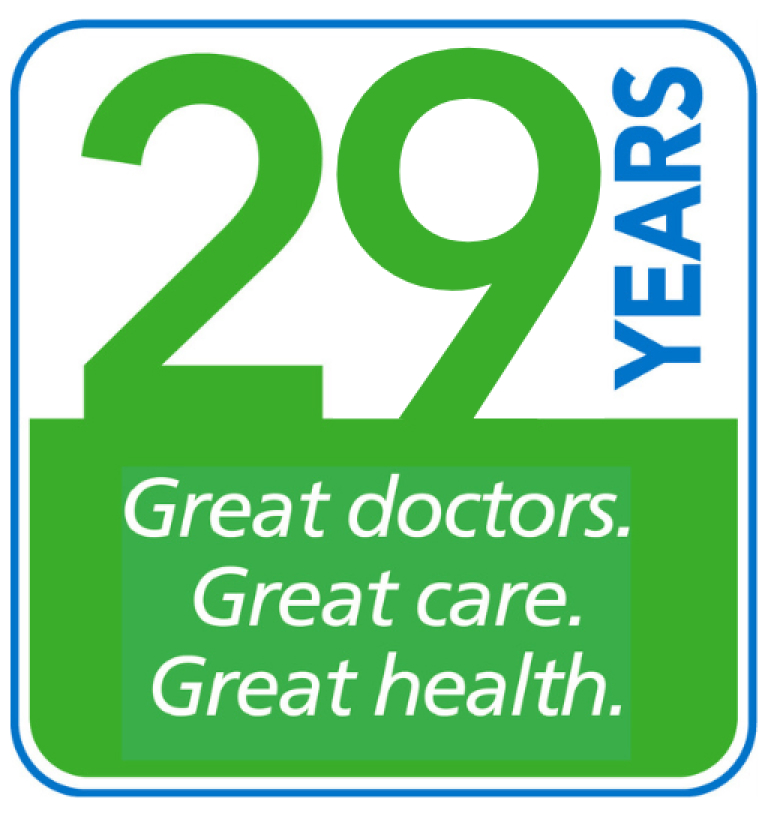Category Archives: Healthy Lifestyle
Naloxone: A Powerful Tool to Fight Opioid Overdose
By: ANDREA C. CUNIFF, M.D.
The opioid crisis continues in Maryland and has gotten worse as the powerful drug fentanyl is increasingly mixed into illegal drugs. From 2022 to 2023, the state saw 2,583 fatal overdoses, and fentanyl was involved in about 81% of those deaths.
In response, there has been a growing use of naloxone (commonly known by the brand name NARCAN®), a medication approved by the Food and Drug Administration that rapidly reverses opioid overdose. It has been used to save lives in Maryland. Healthcare officials encourage its distribution and use by the public.
What is naloxone?
Naloxone is an opioid antagonist: it attaches to opioid receptors in the body, reversing and blocking the effects of opioids, including heroin, morphine and oxycodone. Naloxone can quickly restore normal breathing to a person whose breathing has slowed or stopped because of an opioid overdose. However, it only reverses opioids and will not work on other drugs like cocaine or methamphetamine.
How naloxone is given
Naloxone should be given to any person who shows signs of an opioid overdose. It can be administered as a nasal spray or an injection. Learn how to respond to an overdose with guidelines from the Maryland Department of Health.
Signs of opioid overdose
- The person’s face is extremely pale and/or feels clammy to the touch
- Their body goes limp
- Their fingernails or lips have a purple or blue color
- They start vomiting or making gurgling noises
- They cannot be awakened or are unable to speak
- Their breathing or heartbeat slows or stops
Source: Substance Abuse and Mental Health Administration
Who can give naloxone?
Naloxone is widely used by police officers, emergency medical technicians (EMTs) and non-emergency first responders. In Maryland, anyone can administer naloxone and training is not required, but your healthcare provider or pharmacist can advise you how to use it.
You can buy naloxone at a pharmacy without a prescription. Free naloxone may also be available from Overdose Response Programs located throughout the state.
What to keep in mind
Naloxone works for about 30 to 90 minutes, but many opioids remain in the body longer than that, so a person can still experience the effects of an overdose after naloxone wears off. If you administer naloxone to an overdose victim, you should still call 911 as soon as possible for immediate medical attention.
Side effects from naloxone are rare, but some people might have allergic reactions to it. Overall, naloxone is a safe medicine and has the potential to save many lives.
In the state of Maryland you are protected under the Good Samaritan Law. This means you will not be arrested or prosecuted if you administer naloxone while you are under the influence of alcohol or illicit drugs, or are in possession of illicit drugs at the time of administration.
More about naloxone
 Dr. Cuniff treats patients in the Annapolis office. She is certified by the American Board of Family Medicine and earned her medical degree from the University of Maryland School of Medicine.
Dr. Cuniff treats patients in the Annapolis office. She is certified by the American Board of Family Medicine and earned her medical degree from the University of Maryland School of Medicine.
10 ‘Healthy’ Foods That Aren’t Good for You
By: OLADUNNI FILANI, MD
Even though food companies market many foods and beverages as “healthy,” some may not be nutritious choices. Many are packed with sugar, salt and other ingredients that can impact your health.
Here are 10 popular foods widely viewed as “healthy” that are actually not good for you.
- Veggie chips: “Veggie” may be in the name, but that doesn’t make them healthy. Many veggie chips are nutritionally similar to potato chips because they are highly processed, deep fried in oil and heavily salted. Also, some are made from potato flour with vegetable powder added for flavor, so you’re basically getting a potato chip.
If you’re craving a veggie crunch, look for those that are baked instead of fried and have less sodium.
- Fruit juices: All fruit juices are high in sugar. An eight-ounce serving of juice contains about eight teaspoons of sugar, the same as a soda. Fruit juices have “natural” sugar, but that doesn’t make it healthier than the sugar in soda.
On the plus side, fruit juice offers some nutrients. Studies show drinking no more than five ounces a day is linked to a lower risk of heart disease and stroke. So a small amount of fruit juice is okay, but a lot can give you too much sugar and contribute to poor health.
- Plant-based meats: Plant-based meats are promoted as being healthier than real meat, but that’s not always the case. They are often highly processed and high in saturated fats and sodium, and they usually don’t contain the same protein levels as lean meat, fish, poultry and eggs.
- Granola and granola bars: Some granolas and granola bars are very nutritious, but many are loaded with extra sugar and are high in calories. For example, a 2/3-cup serving of Nature Valley Oats and Dark Chocolate Protein Granola contains 7 grams of added sugar and 290 calories, while Quaker Chewy Yogurt Granola Bars include 10 grams of added sugar per bar.
If you like granola but want to avoid unhealthy store brands, try making your own at home. You can use nutritious ingredients like nuts and oats and add sweetness with dried fruit.
- Flavored yogurts: Don’t let the small cartons fool you, flavored and “fruit on the bottom” yogurts can pack a lot of sugar in one serving. For example, a 5.3-ounce container of Dannon Strawberry Fruit on the Bottom yogurt contains a hefty 15 grams of added sugar. Yogurts that have candy toppings and “flip-style” yogurts can have even more.
Instead of choosing sweetened yogurt, try topping unsweetened yogurt with fresh fruit for a bit of natural sweetness.
- Protein drinks and bars: Just because a product is high in protein doesn’t make it healthy. These items are often loaded with extra sugar, sodium and artificial ingredients.
If you do want extra protein in your diet, you can get it by eating more protein-rich foods, such as fish, eggs and beans.
- Sports drinks and energy beverages: Advertising for these products say they boost energy and athletic performance, but they can also be high in added sugar and caffeine. A 20-ounce bottle of Fruit Punch Gatorade contains 34 grams of added sugar, and the Monster Energy drink has 54 grams per 16-ounce can. (This is more than your recommended daily amount of sugar!)
Most people who perform moderate exercise or normal daily activity don’t need sports drinks to stay hydrated. Plain water works just fine.
- Gluten-free snacks: People with gluten-related disorders need to avoid gluten — a protein found in wheat and several other grains. But nutritionists agree that for most of us eating foods with gluten is fine and there is no health benefit to cutting them out of your diet.
If you go gluten-free when you don’t need to, there’s a risk you could miss out on nutritious whole grains, fiber and micronutrients. Also, some processed gluten-free snacks tend to be lower in protein, fiber and vitamins and minerals than other snacks, and may have as much sugar and calories.
- Premade smoothies: Homemade smoothies can be a tasty way to get more fruits and vegetables into your diet. However, premade smoothies and those from some chains contain large amounts of calories and sugar. If you buy a smoothie, be sure to check the ingredients first and avoid the unhealthy ones.
- Some plant-based milks: Plant-based milks — including those made from almonds, coconut, rice, and soy — can be an excellent alternative to dairy products. However, many plant milks add sugar to improve their taste. For example, original Almond Breeze almond milk contains 7 grams of added sugar per 1-cup serving.
It’s a good idea to choose unsweetened plant milks if you want to limit added sugar. So before you buy a product, read the nutrition label and look for those with less sugar.
 Dr. Filani cares for patients in MPCP’s Bowie office. He is certified by the American Board of Family Medicine and completed his fellowship in Primary Care Sports Medicine at the University of Maryland.
Dr. Filani cares for patients in MPCP’s Bowie office. He is certified by the American Board of Family Medicine and completed his fellowship in Primary Care Sports Medicine at the University of Maryland.
Spring-clean Your Way to Better Health
By: ARLENE CABRERA, FNP-C
Spring-cleaning is a good way to greet the arrival of warm weather after being cooped up indoors for months. It’s a time to declutter and purge, but it also has real health benefits, from boosting your immune system to reducing stress. Before you pick up a broom, see how making your house cleaner can also make you healthier.
Spring-cleaning can prevent illness
Items in the house you use a lot, especially if several people use them, can be breeding grounds for viruses and bacteria. Things like faucets, doorknobs, cutting boards and counters need to be thoroughly cleaned to prevent the spread of germs.
Tips to prevent illness:
- Clean the items you use most, or items that could come in contact with your mouth, eyes or nose, including your cellphone, keyboard, bedding and towels.
- Sanitize surfaces with alcohol-based cleaners to kill germs.
- Certain parts of the kitchen need special attention, such as the refrigerator and freezer, pantry, counters and cupboards. The kitchen sink can contain more bacteria than a toilet — Yuck! — so clean it regularly.
- Wash all your produce before cooking to prevent foodborne illness.
- Pay special attention to bathrooms and other places that are shared with family members.
Spring-cleaning can decrease stress and improve mood
We spend most of the winter months inside, and many of us are working at home at least part time due to COVID-19. Stuff tends to accumulate, and clutter can negatively impact our mood and sense of well-being.
Many people find that the process of sorting through items, reorganizing and getting rid of unwanted stuff by tossing, donating or recycling them can be mentally refreshing. Studies have found that people who clean out clutter enjoy better moods and report being able to think and sleep better.
Tips to improve mental health:
- Don’t just stack magazines or shove unworn clothes into the closet. Sort through clothing, toiletries, kitchen supplies and paperwork. Get rid of things you no longer need.
- To help you sleep better, keep only essentials on your bedside table. Also, one study reported that people who change their sheets often sleep better than those who don’t.
- Use cleaning as a de-stressing ritual. As you clean, practice being mindful of the tasks you’re doing. This will help promote a positive attitude and clear mind.
Spring-cleaning protects your immune system
During the winter months, allergens like dust, mold, mildew and pet dander collect in your house. Plus, the blossoming of plants outdoors can bring seasonal allergens into your home, increasing your risk for allergies and other respiratory problems. A clean house can help you breathe better by preventing respiratory issues and supporting a healthy immune system.
Tips to boost your immune health:
- Dust all surfaces, including those you may not usually clean, including the legs of furniture, tops of frames and mirrors, tops of lamps and lights, floor baseboards, railings and window sills.
- Vacuum your floors – especially the corners — curtains and ceiling cobwebs to eliminate dust. Wash rugs, when possible, and consider having your carpets cleaned to remove deep-down dirt.
- Wash all bedding and blankets. Put pillows into the dryer on high heat for 10 minutes to kill any dust mites.
- Change your furnace filters to make sure the air in your house stays cleaner.
- Take off your shoes at the door to avoid carrying in dirt and dust.
Spring-cleaning reduces risk of injury
Falls at home are a common cause of injuries, especially among older adults. Spring is a good time to make adjustments to your home, or an older parent’s home, to reduce the risk of falls. Having a clear path and removing obstacles can help reduce the risk of accidents.
Tips for a safer home:
- Remove clutter from pathways, hallways and staircases. This includes backpacks, shoes, sports equipment, shopping bags and boxes.
- Fasten down loose rugs with double-faced tape, tacks or a slip-resistant backing.
- Tack electrical cords to baseboards or reroute them along the wall to eliminate the risk of tripping on one.
- Move coffee tables, magazine racks and plant stands from high-traffic areas.
- Use nonslip mats in your bathtub or shower.
 Arlene Cabrera, FNP-C, received her Bachelor of Science in Nursing degree from Far Eastern University, Philippines, and her Master of Science in Nursing degree from Walden University, Minneapolis, Minn. Formerly an intensive care nurse with the University of Maryland Medical System, she treats patients in MPCP’s Arundel Mills office.
Arlene Cabrera, FNP-C, received her Bachelor of Science in Nursing degree from Far Eastern University, Philippines, and her Master of Science in Nursing degree from Walden University, Minneapolis, Minn. Formerly an intensive care nurse with the University of Maryland Medical System, she treats patients in MPCP’s Arundel Mills office.
Careful with the Caffeine
By: PAUL CHITE, M.D.
For most adults, caffeine helps us wake up in the morning and gives us a pleasant boost during the day. There are a variety of available caffeinated products to suit any taste, from tea and coffee to energy drinks and chocolate.
Caffeine is a stimulant, and its effects increase with the amount consumed. Up to 400 milligrams (mg) of caffeine a day is safe for most healthy adults. That’s the equivalent of about four cups of brewed coffee, 10 cans of cola or two “energy shot” drinks. (See the chart below for the caffeine content of popular drinks.)
Health downsides
As you may know from experience – for example, on days you drink more coffee than usual — too much caffeine can cause some unpleasant side effects. Common side effects include headaches, feeling jittery, increased urination, and irritability. Most side effects are mild, but others are more serious and can cause health problems such as:
- Trouble sleeping: Too much caffeine can cause difficulty falling and staying asleep. Even moderate amounts can cause insomnia in some people, especially if you have it too close to bedtime. In fact, caffeine can stay in your system for up to eight hours after you consume it. Lack of sleep can contribute to health problems – such as mood disorders and obesity — so avoid caffeine in the afternoon and evening if you notice it affects your sleep.
- Faster heart rate: Caffeine causes your heart to beat a little faster. That’s not a problem for most of us, but if you consume too much, your pulse may stay high too long. It may even feel like your heart beats in an irregular rhythm, sometimes called heart palpitations. Excessive caffeine may even trigger episodes in people who have certain heart conditions, such as atrial fibrillation.
- Raised blood pressure: Caffeine can spike your blood pressure for a short while and sometimes over the long term. High blood pressure is linked to other health problems, including heart and kidney disease, so talk to your doctor about how much caffeine you can take if you have high blood pressure.
- Worsened menopause symptoms: Women experience the change of menopause around age 50, and caffeine can increase the sudden hot flashes that often happen at this time of life.
Many teens enjoy sugary coffee drinks or caffeine-laden energy drinks, but teens are especially sensitive to caffeine’s effects and should avoid it. Also, caffeine can interfere with fetal development, so women who are pregnant or are trying to become pregnant should talk with their health provider about limiting caffeine use.
Curbing your caffeine habit
Your body gets used to a certain level of caffeine, so if you decide to quit it all at once, you may experience withdrawal symptoms, such as headaches and fatigue. These symptoms are usually mild and resolve after a few days.
A better approach may be to gradually reduce the amount of caffeine you consume until you are caffeine-free. Try these methods:
- Cut back slowly: Try drinking one less cup of coffee or one less soda each day or drink a smaller cup of coffee. This will help your body get used to the lower levels of caffeine.
- Switch to decaf. Most decaffeinated beverages look and taste much the same as their caffeinated counterparts.
- Shorten brew time or go herbal. When making tea, brew it for less time. This cuts down on its caffeine content. Or drink herbal teas that don’t have caffeine.
- Avoid energy drinks: Caffeine is a main ingredient of many energy drinks, so it’s best to avoid them.
Typical caffeine content of popular drinks
| Coffee | Sizes | Caffeine content (mg) |
| Brewed | 8 oz. | 96 mg |
| Brewed, decaf | 8 oz. | 2 mg |
| Espresso | 1 oz. | 64 mg |
| Espresso, decaf | 1 oz. | 30 mg |
| Teas | Sizes | Caffeine content (mg) |
| Brewed black | 8 oz. | 47 mg |
| Brewed black, decaf | 8 oz. | 2 mg |
| Brewed green | 8 oz. | 28 mg |
| Bottled | 8 oz. | 19 mg |
| Sodas | Sizes | Caffeine content (mg) |
| Cola | 8 oz. | 22 mg |
| Root beer | 8 oz. | 0 mg |
| Citrus-flavored | 8 oz. | 0 mg |
| Energy Drinks | Sizes | Caffeine content (mg) |
| Energy drink | 8 oz. | 71.9 mg |
| Energy shot | 2 oz. | 215 mg |
Source: Mayo Clinic
 Dr. Chite cares for patients in the Pasadena office. He earned his medical degree from American University of the Caribbean, Saint Maarten, and is certified by the American Board of Family Medicine.
Dr. Chite cares for patients in the Pasadena office. He earned his medical degree from American University of the Caribbean, Saint Maarten, and is certified by the American Board of Family Medicine.



